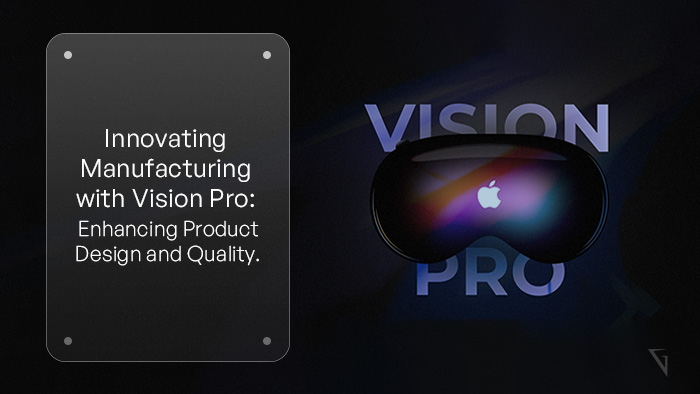

The manufacturing industry is undergoing a significant transformation with the advent of advanced technologies. One such technology that is revolutionizing manufacturing processes is Apple Vision Pro. This article explores how Vision Pro can be leveraged to drive innovation in manufacturing, specifically in the areas of product design and quality control. By harnessing the power of computer vision and augmented reality, manufacturers can enhance their design processes, improve product quality, and drive operational efficiency.
With Vision Pro, manufacturers can create a virtual design environment where product prototypes can be visualized and refined before physical production. By leveraging augmented reality, designers can view and manipulate virtual 3D models, enabling them to make informed decisions about form, function, and aesthetics. This streamlined design visualization process helps reduce design iterations, time-to-market, and overall costs.
Vision Pro facilitates collaborative design reviews by allowing stakeholders to view and provide feedback on virtual product models in real-time. Designers, engineers, and other team members can remotely join design sessions, offer suggestions, and evaluate design alternatives. This collaborative approach fosters innovation, accelerates decision-making, and ensures that diverse perspectives are considered during the design process.
Vision Pro enables manufacturers to validate and simulate product designs in a virtual environment. By overlaying virtual models onto physical spaces or objects, designers can assess factors like ergonomics, assembly processes, and usability. This virtual simulation capability helps identify potential design flaws early in the development cycle, leading to improved product quality and reduced manufacturing costs.
Vision Pro can be used to automate the quality control process by identifying defects or anomalies in manufactured products. By analyzing visual data captured through cameras or sensors, manufacturers can leverage computer vision algorithms to detect imperfections, measure dimensions, and identify deviations from desired specifications. This automated defect detection enhances accuracy, consistency, and efficiency in quality control.
Vision Pro enables real-time monitoring of production processes, allowing manufacturers to gather valuable data for analysis and optimization. By integrating computer vision technology into assembly lines, manufacturers can track key performance indicators, identify bottlenecks, and implement data-driven improvements. This data-driven approach to quality control empowers manufacturers to make informed decisions, reduce waste, and enhance overall productivity.
With Vision Pro, manufacturers can conduct remote quality inspections, eliminating the need for on-site visits. Through augmented reality, inspectors can remotely assess product quality, compare it against specifications, and provide feedback to production teams. This remote inspection capability saves time, reduces costs, and ensures consistent quality across geographically distributed manufacturing facilities.
To fully leverage the benefits of Vision Pro in manufacturing, organizations need to invest in the necessary infrastructure and integrate the technology with existing systems. This may involve training employees, upgrading hardware and software, and establishing secure data management practices. By embracing technology adoption and integration, manufacturers can stay ahead of the competition and drive innovation in their processes.
As with any technology that involves data collection and analysis, manufacturers must prioritize data security and privacy. Implementing robust cybersecurity measures, complying with data protection regulations, and ensuring secure data storage and transmission are essential. By safeguarding sensitive manufacturing data, manufacturers can build trust with customers and protect their intellectual property.
Apple Vision Pro is unlocking new possibilities in manufacturing, empowering companies to enhance product design, improve quality control, and drive innovation. By leveraging augmented reality and computer vision, manufacturers can streamline design processes, detect defects more efficiently, and make data-driven decisions. As manufacturing continues to evolve, embracing technologies like Vision Pro is crucial for staying competitive in the global market.
With Vision Pro, manufacturers can accelerate product development, enhance product quality, and achieve operational excellence. The future of manufacturing is here, and the opportunities are limitless for those willing to embrace this transformative technology.
OpenAI DevDay showcases the latest AI innovations, pushing technology’s boundaries in an ever-evolving landscape.
Explore the top 10 database types for software projects, their unique features, and which one…
Explore PWAs: Your FAQs Guide to Integrating Camera, Geolocation & Device APIs. Harness native features…
General Understanding of PWAs and SEO 1. What is a Progressive Web App (PWA)? A…
Understanding Offline-First Approach Basics 1. What is the concept of "Offline-First" in the context of…
General Overview 1. What are cross-platform frameworks, and how do they relate to Progressive Web…